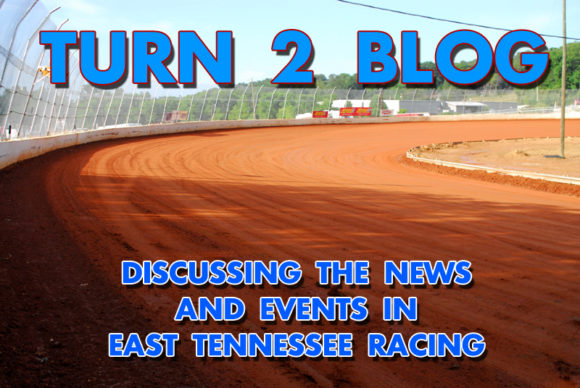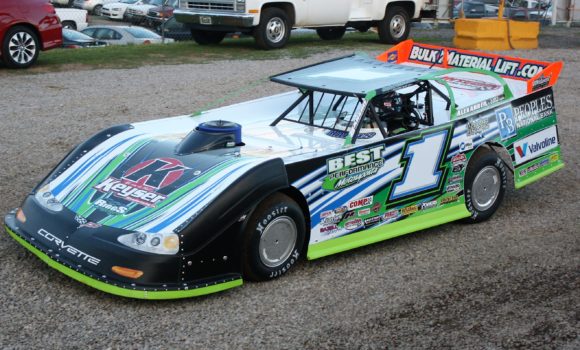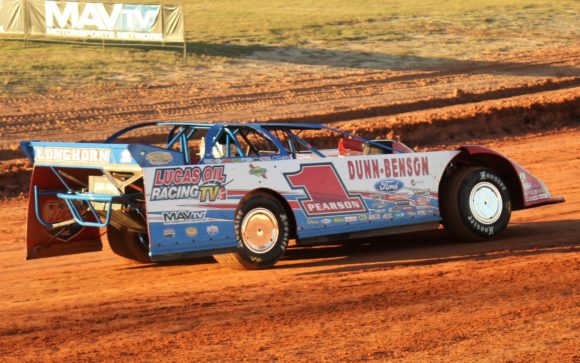Richard: In looking over the series standings following this past very busy weekend for the national touring series, something about the drivers at the top of the lists for each of the two series caught my attention. The top-7 drivers in the current Lucas Oil Late Model Dirt Series rundown and nine of the top-10 have all won a national touring series title at some point in their careers. Conversely, none of the top-4 in the World of Outlaws Late Models standings and only two of their top-10 have hoisted a season ending championship trophy.
To me, that really shows the different characters of the two tours. Whether intended to be that way or not, the Lucas Oil Series seems to be the place for the more established and proven drivers to ply their trade while the WoO Late Models circuit seems to be the place for up-and-coming drivers to earn national recognition.
In my mind, it will make following each of these two series very interesting over the next few months. Obviously, we will have a better idea of who the real contenders are for each series crown somewhere around the end of May when some drivers and teams decide whether or not they are really going to see the chase all the way through to the end.
But it is an interesting point in that the two are so different from each other, isn’t it?
Michael: It’s rather ironic that both series have turned out that way considering how each started. The World of Outlaws began with the “Dirty Dozen”, 12 drivers that were committed to running the series on a full-time basis and all were very accomplished racers. The Lucas Oil Series was basically started to fill the void for drivers that weren’t invited to be a part of the Dirty Dozen but still wanted to run their own national series.
It’s also interesting to see how each series has flipped on tires over the years. While World of Outlaws didn’t have a rule against running anything other than Hoosiers and Hoosier was the driving force behind the series coming together with the Xtreme DirtCar Series going with Goodyear in 2004. Lucas was pretty much an open tire series. Fast-forward to today and Lucas is Hoosier only with certain compounds available at certain tracks and World of Outlaws is basically the open tire series.
Richard: That is interesting.
Another interesting thing to me is that while there are dominant drivers on both tours, picking a winner from race to race is not a guarantee. Over this past weekend, there were five feature races between the two that provided five different winners.
There have been six different drivers to visit victory lane on the Lucas tour while the WoO Late Models have had seven different winners. There have also been crossover wins as WoO regular Brandon Sheppard has won twice on the LOLMDS and Lucas regular Don O’Neal won a WoO event.
No doubt, Josh Richards and Scott Bloomquist will pile up their share of wins on the Lucas side of things and Sheppard will score numerous victories with the WoO Late Models. And having guys who can win races in bunches is not necessarily a bad thing. It gives fans something to talk about and someone to root for…or against.
At the same time, it’s always good for any racing series to have multiple stars who have a chance to win every time they unload their car.
Michael: Having one driver dominate is usually a bad thing. There are exceptions to that such was when Jonathan Davenport dominated the Lucas tour in 2015. I think part of that was it was someone new that hadn’t dominated before and Davenport is a likable guy from the fans’ standpoint.
Parity is a good thing for the fans. As you said, five different winners in five different races is something most fans want to see minus their favorite winning all the time. Knowing who is going to win anytime a series shows up at a particular track or series doesn’t help attendance at all.
Richard: One concern I have regarding this past weekend’s races is that of a lack of lead changes. We posted a Weekend Recap of the touring series races that in some way touch our region and I noticed that in five of the seven events that were mentioned, the phrases ‘led all the way’ or ‘led flag-to-flag’ were used.
Granted, in virtually every one of those features, there was great racing behind the leader. However, most people’s impression of how good or bad a race happened to be is often determined by lead changes. I believe one reason why NASCAR has seen significant downturns in attendance and television ratings over the past few years is that the leader of the race rarely gets passed on the track.
While the parity seen over this past weekend can certainly be a good thing, the fact that leaders lead entire races on a somewhat regular basis is something that the different series need to look into. As counter-intuitive as it may seem, I have thought for a long time that race cars in all forms of racing are going too fast. As a result, aerodynamics and other factors have made passing the car that sits out ahead of the pack in clean air virtually unstoppable.
Are there too many ‘led flag-to-flag’ races or am I seeing a problem that isn’t there?
Michael: There is a bit of a problem. But I’m not exactly sure where the problem is.
One school of thought is track prep. That is always to blame by some fans whenever a driver leads all the way. I don’t know if that was the case at Smoky Mountain as the track was quite racey during the features. In watching the video from East Alabama, the track locked down halfway through the race.
Another common complaint is the race format. Folks in the Midwest and other parts of the country are used to inverts or pill draws. Lucas does not invert, but I have seen some good racing in this format as well as some bad ones. World of Outlaws does a redraw that usually mixes up the field. But if the track isn’t conducive to passing that particular night, a redraw or invert does no good. That’s why there is no one perfect solution.
Tagging along your NASCAR comment, some tend to think the current Dirt Late Models are too aero sensitive. The top series should conduct some research on this to see if this is the case. If it is, change up some things and get that out of the cars. If that is not the problem, tell the fans and competitors so everyone would focus on setups instead of aero.
Richard: I’m not ready to compare Dirt Late Model racing to NASCAR just yet. And I’m not necessarily complaining. I’m just pointing out what I noticed this weekend. But like you say, it would be a good idea for the national series to do some research and try to find a solution that would not cause a significant increase in costs for the teams.
I agree that the track itself can play a major role in determining what type of racing fans will see throughout the night. Dirt racing is fantastic. We just want to make sure it stays that way.









